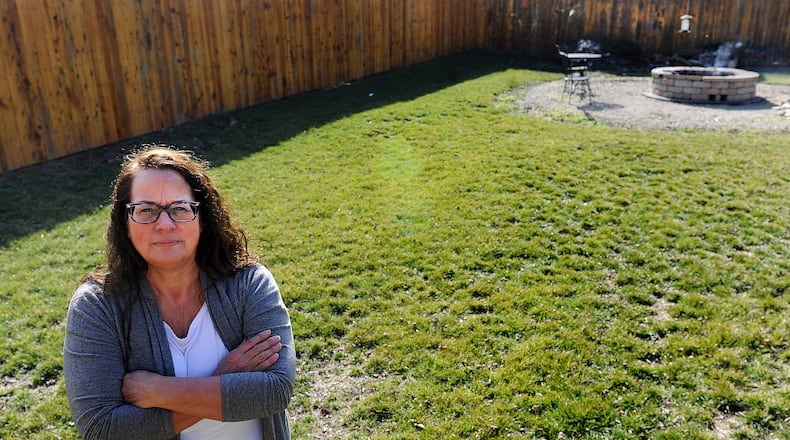According to documents provided to the Dayton Daily News, the six-mile project involves replacing more than 89 wood utility poles with 80-foot steel poles that are taller and more resilient, according to Duke Energy. On average, the wood poles are 70 years old, the utility said.
The easements were granted to Dayton Power & Light for $1 in 1924. Over the years, the easements were transferred to Cincinnati Gas & Electric, which became part of Duke Energy, according to records from the Warren County Recorder’s Office.
Sections of the project also will include construction on the lower-voltage distribution lines that carry energy into homes and businesses. The line serves one wholesale and 8,165 residential customers, according to Duke Energy.
On Thursday, more than 50 people attended a community meeting to discuss the issue. No decision or action was made about possibly obtaining legal representation for the residents, but they plan to meet again on Feb. 21.
One of the residents, Missie Miller, said she recently received a letter dated Jan. 31 from Duke Energy advising her to clear any items or other obstructions outside of the 25-foot easement. However, she said she did not know there was an easement on her Meadowlark Drive property when it was purchased 17 years ago. Over the years, she and her husband have made more than $100,000 in improvements to their home, she said.
“There are no easements on my deed,” she said. “This will reduce the property value as it will take a 25 by 80 foot piece of land that we can’t use. Our firepit and fence will have to come out. We still have to pay taxes on it.”
At the county Recorder’s Office, the 1924 easement that was recorded on her property stated: “Should said pole line not be constructed by July 1st, 1924, or within a reasonable time thereafter, or if the same shall be abandoned after it is constructed then this conveyance shall become void, and the rights hereby granted shall cease and terminate.”
Miller contends that CG&E or Duke Energy never got the easement transferred to them. “They thought the 1924 easement was good. It is not because the poles had to be built in 1924 or a ‘reasonable’ time. Thirty to 50 years is not a reasonable amount of time,” Miller said.
Another resident, Kim Younce of Bobby Place, said she and her husband are being asked to take down a two-story barn and 96 feet of fencing.
“We are losing a $50,000 building that was zoned and permitted in 2018,” she said. “We’ve been asking a lot of questions in the last three weeks.”
Younce said she has not received any offers but has been told that the Duke representative was going to try and work with them.
Resident Lee Turck said he is losing about 50 feet of fence and property.
“I don’t believe the tactics they (Duke) are using are correct,” he said. “Strong-arming people is a bully tactic.”
Warren County Recorder Linda Oda said information about the easement can be seen online at warrencountyrecorder.com or by contacting the county Recorder’s Office at 513-695-1382. The county has indexed all deeds going back to 1797.
“All the plats show dotted line indicating easements and setbacks,” she said. “Nobody’s right and nobody’s wrong. It’s going to take a truckload of attorneys to sort this out.”
Oda said that unless a special request is made, a title search goes back 42 years for residential property and 100 years for commercial property.
“No one looked back far enough, and most deeds say that they are subject to restrictions, easements, prior conditions and covenants,” she said,
Easements granted by a previous property owner must be followed. She said the property owner remains responsible for the taxes and maintenance of the easement because they still own the property.
She said this is “an unfortunate situation” and added that property buyers should always check the plats before completing a purchase.
Jeff Brooks, a Duke Energy spokesman, said the easement goes 25 feet in from the center of the transmission line under current standards.
“We understand their concerns and we’re trying to find a middle ground,” Brooks said. “We are working with individual property owners.”
Brooks said the easements serve as a buffer and that taller poles will make the transmission line more resistant to outages. He also said that this will help to restore the original buffers that changed over time.
According to Duke Energy’s plans, construction started last spring for the distribution portion of the project. Vegetation maintenance was to be started in summer 2023 to prepare for the transmission construction, which is expected to be completed by December. However, there could be lags between phases of construction, and schedules may shift due to circumstances such as weather conditions.
About the Author





